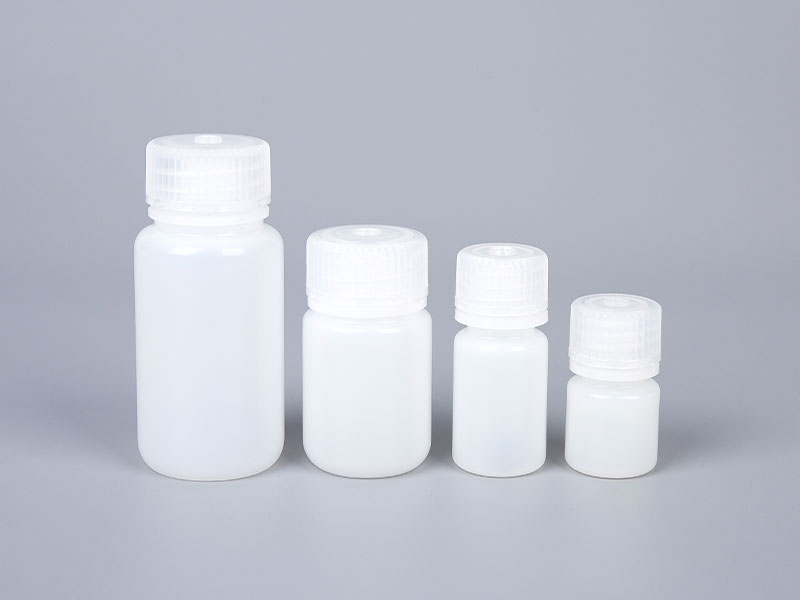Using Reagent Bottles Safely for Reactive Chemicals
Narrow-mouth reagent bottles are essential tools in laboratories, offering precise storage solutions for chemicals used in research, industry, and medicine. Whether made of translucent polypropylene (PP), high-density polyethylene (HDPE), or amber HDPE for photosensitive materials, these bottles are built to handle a wide range of substances. Yet, when storing highly reactive or corrosive chemicals, there are limitations and precautions to consider to ensure safety, integrity, and optimal performance.
One critical aspect to evaluate is the material compatibility with specific chemicals. PP and HDPE bottles are known for their resistance to many acids, bases, and alcohols. PP, being autoclavable, is excellent for applications requiring sterilization, but it may not perform well with highly oxidative chemicals. HDPE, on the other hand, boasts superior impact resistance and is highly durable at low temperatures, making it ideal for cold chain transport or volatile storage environments. However, some solvents, such as strong organic acids or halogenated hydrocarbons, may cause gradual degradation or leaching in HDPE over time. Amber HDPE adds another layer of utility by protecting light-sensitive substances, but it shares the same chemical resistance profile as standard HDPE, necessitating careful selection of chemicals stored.
Precautions must also extend to how these bottles are sealed and handled. For instance, Bioland™ reagent bottles feature leak-proof designs to prevent spills, but their narrow-mouth openings may make precise pouring of volatile chemicals a challenge, requiring additional tools like pipettes or funnels. When autoclaving PP bottles, users are advised to remove caps entirely and place them loosely on the bottle to avoid compromising the seal from pressure buildup. Failure to follow these guidelines can result in distorted threads or accidental chemical exposure. Similarly, highly reactive chemicals may necessitate vented caps or additional containment measures to safely release pressure.

Temperature stability is another factor that must be addressed. While HDPE exhibits excellent resistance to freezing temperatures, prolonged exposure to high heat or fluctuating conditions may weaken its structural integrity. PP fares better in high-temperature scenarios but has limitations in extremely cold environments. Users storing reactive substances must account for these thermal tolerances to prevent material failure or compromised seals during transport or storage.
Lastly, it’s essential to consider regulatory compliance and environmental impact. Bioland™ reagent bottles are robust and reusable, but users should ensure that their specific bottle choice complies with safety standards for chemical storage, particularly when used in regulated industries like pharmaceuticals or food production. Additionally, understanding whether the bottles are recyclable can help organizations align their storage solutions with sustainability goals. Opting for reusable caps or bottles further minimizes waste and enhances cost-effectiveness.
While Bioland™ narrow-mouth reagent bottles provide a versatile and reliable solution for storing a variety of chemicals, users must be mindful of material compatibility, sealing methods, temperature limitations, and regulatory requirements when dealing with highly reactive or corrosive substances. By following proper precautions and understanding the limitations of each material, these bottles can serve as a safe and efficient choice for chemical storage in both professional and industrial settings. With thoughtful handling and an eye toward chemical properties, you can ensure both safety and performance in even the most demanding applications.
For more information, please call us at +86-0571-87993109 or email us at hzbioland@126.com.
Aseptic vacuum filters, like Bioland™ disposable vacuum filtration units, are designed for high-effi...
Whether used in the food hygiene industry, water monitoring, or research labs, selecting the right m...
Narrow-mouth reagent bottles are essential tools in laboratories, offering precise storage solutions...
In laboratory diagnostics, particularly in PCR (Polymerase Chain Reaction) testing, efficiency is pa...
When working with the Bioland™ Cell Shaker, one of the most crucial factors in ensuring successful c...
Polymerase chain reaction (PCR) is one of the most vital techniques in molecular biology, allowing s...

 中文简体
中文简体 English
English Español
Español русский
русский











